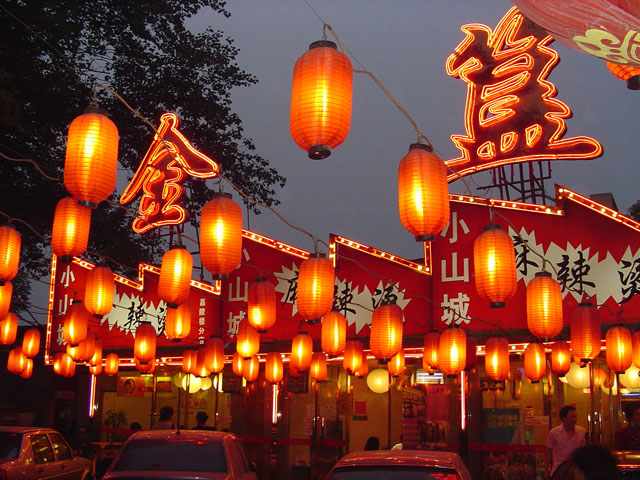Eating at "Ghost Street"
Updated: 2007-05-11 13:38
Click for more photos on page 62-67 of 
Red lanterns, traditional courtyards, hundreds of restaurants along the street ......This is Guijie Street, Beijing's famous eating street, known to locals as 'Ghost Street'. Eating on Ghost Street is about more than food and drink, it's a way of life for many Beijingers.
Tucked behind Beijing's Inner Dongzhimen Street, "Ghost Street" stretches 1,442 m from Dongzhimen cloverleaf junction in the east, to Jiaodaokou East Street in the west. Along the street there are more than 150 shops, including 100 restaurants, making it one of the most unique streets in Beijing.
|
Readers' comments: Enlighten: Guijie is the most famous eating street in Beijing.It is about more than food and drink, it's a way of life for many Beijingers.Fish in Sour Soup is one of my favorite dishes here,hmmmmm, yummy!! Contribute your comments to Forum |
The name of the street is said to derive from Beijing's old "Ghost Fairs". These fairs mainly sold groceries, vegetables and fruit ran from late at night until dawn. The traders' kerosene lamps formed a ghostly sight from which the name "Ghost Fair" derived. Another explanation is that I the bustling Inner Dongzhimen Street was filled with taxi drivers eating late - night snacks, and most shops didn't put up their shutters until the dawn while some stayed open all night. Later, the Commerce Commission changed the Chinese characters of "Ghost Street" into "Gui Jie". The pronunciation is the same but the meanings are completely different. Gui refers to a round- mouthed food vessel with two or four loop handles in ancient China. This name weakens the ghostly overtones and enhances the eating character of the street.
The structure of Guijie Street is like a dumbbell - bigger both ends and
smaller in the middle. Restaurants at the ends are flourishing businesses, but
the center area is rather dull. The reasons for this may be that it's
inconvenient to transport goods to the middle of the street, and there are not
so many stores in the middle.
| 1 | 2 | 3 |  |


